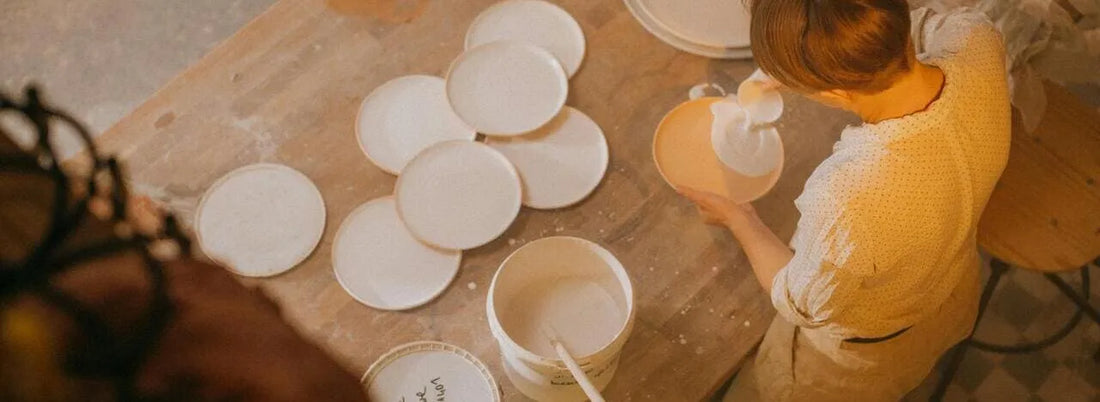
From the idea to the finished product: The manufacturing process of ceramic tableware
Share
Reading time: 8 minutes
The production of ceramic tableware is a fascinating process that combines craftsmanship, creativity and technical knowledge. In this article, you will learn how an idea is transformed into a finished ceramic piece - from the selection of raw materials to the final glaze.
1. The idea and the design
The process begins with an idea. Designers and ceramic artists create sketches or models that serve as the basis for the finished product. This is where the shape, size and function of the tableware is decided. The design determines not only the aesthetics but also the practicality of the tableware.
2. Selection of raw materials
Choosing the right clay is crucial for the quality of the ceramic tableware. Depending on the desired end product, different types of clay are used:
- Kaolin : A particularly pure clay that is mainly used for porcelain.
- Stoneware : A more robust clay, ideal for rustic, everyday tableware sets.
- Earthenware : A coarse-grained clay often used for handcrafted, decorative pieces.
The clay is cleaned to remove impurities and then formed into the desired shape.
3. Shaping
After selecting the clay, the dishes are formed either by hand or by machine. There are different techniques:
- Turning : The clay is shaped on the potter's wheel, which is particularly suitable for round objects such as bowls or cups.
- Casting : Liquid clay is poured into molds to create more complicated shapes.
- Pressing : The clay is pressed into molds, ensuring consistent thickness and shape.
After forming, the dishes are dried to prepare them for the next step.
4. The burning
The first firing, also known as bisque firing, hardens the clay and makes the dishes more stable. This process takes place in a kiln at temperatures between 900 and 1000 degrees Celsius. After bisque firing, the dishes are glazed.
5. The glaze
The glaze not only gives the ceramic tableware its shine, but also makes it waterproof and more durable. There are various glazing techniques:
- Dipping : The dishes are dipped into the glaze.
- Spraying : The glaze is sprayed onto the dishes.
- Painting : For decorative pieces, the glaze is applied by hand.
The dishes are then fired again, this time at higher temperatures (up to 1300 degrees Celsius) to fix the glaze.
6. The final inspection
After the final firing, each piece is checked for defects. Cracks, glaze defects or uneven surfaces result in the piece being rejected. Only the best pieces are sold, which ensures the high quality of ceramic tableware.
Conclusion
The path from the idea to the finished ceramic tableware is a complex and detailed process. The selection of the right materials, the careful shaping and the precise glazing are crucial to creating a high-quality product. Whether handmade or industrially produced, each ceramic piece tells its own story and combines art with functionality.
